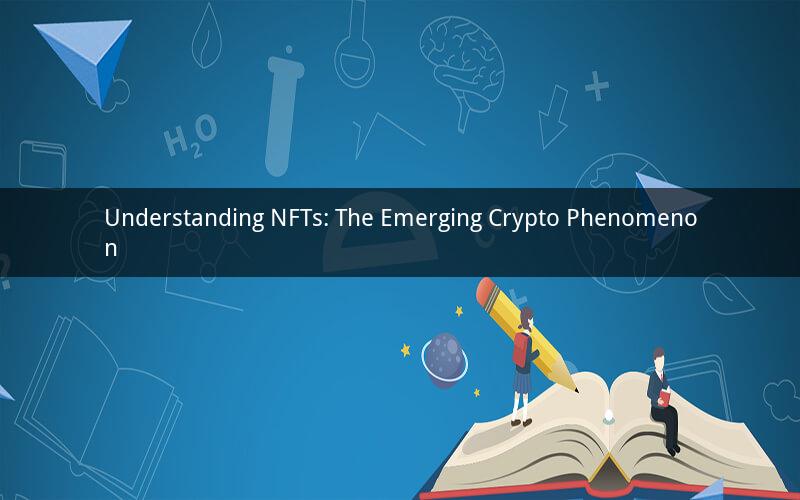
Non-fungible tokens (NFTs) have been making waves in the crypto world, and for good reason. As the digital age continues to evolve, NFTs have emerged as a revolutionary concept that's reshaping the way we perceive and interact with digital assets. In this article, we'll explore what NFTs are, how they work, and their potential impact on various industries.
What is a Non-Fungible Token (NFT)?
An NFT is a unique digital asset that represents ownership or proof of authenticity for a specific item or piece of content. Unlike cryptocurrencies like Bitcoin and Ethereum, which are fungible and can be exchanged on a one-to-one basis, NFTs are non-fungible, meaning they cannot be interchanged with one another. Each NFT is unique, and its value is determined by factors such as rarity, demand, and the creator's reputation.
How do NFTs work?
NFTs are built on blockchain technology, primarily on platforms like Ethereum. When an NFT is created, it is registered on the blockchain as a digital asset with its unique properties and ownership information. This process is known as minting.
Once minted, an NFT can be bought, sold, or traded on various NFT marketplaces. The blockchain ensures that the ownership of the NFT is transparent and immutable, making it a reliable and secure way to prove ownership.
Types of NFTs
There are various types of NFTs, each serving different purposes. Here are some of the most common ones:
1. Art NFTs: Digital art, including paintings, illustrations, and animations, can be minted as NFTs. This allows artists to prove ownership and potentially earn royalties from secondary sales.
2. Collectibles: Digital collectibles, such as trading cards, video game items, and virtual memorabilia, can also be minted as NFTs. This provides a new avenue for collectors to own and trade digital assets.
3. Music: Musicians can mint their music as NFTs, giving fans a new way to own and support their favorite artists.
4. Fashion: Digital fashion items, such as virtual clothing, accessories, and even avatars, can be minted as NFTs, providing a new revenue stream for fashion designers and brands.
5. Virtual Land: In virtual worlds like Decentraland and The Sandbox, land parcels can be minted as NFTs, allowing users to buy, sell, and develop virtual properties.
The Potential Impact of NFTs
NFTs have the potential to disrupt various industries, including:
1. Art and Entertainment: NFTs can revolutionize the art and entertainment industries by providing artists and creators with new revenue streams and greater control over their work.
2. Collectibles: NFTs can transform the collectibles market by making it more accessible and transparent for collectors to own and trade digital assets.
3. Fashion: Digital fashion items minted as NFTs can enable new business models for fashion designers and brands, as well as provide consumers with a unique ownership experience.
4. Real Estate: NFTs can potentially disrupt the real estate industry by digitizing property ownership and making it more accessible to a global audience.
5. Sports: Athletes and sports organizations can mint exclusive digital memorabilia and experiences as NFTs, providing fans with new ways to engage with their favorite teams and players.
Frequently Asked Questions (FAQs)
1. What is the difference between NFTs and cryptocurrencies?
- NFTs are non-fungible digital assets that represent ownership or proof of authenticity, while cryptocurrencies are fungible digital assets that can be exchanged on a one-to-one basis. NFTs have unique properties and cannot be interchanged with one another, while cryptocurrencies are identical and can be exchanged for one another.
2. How do I buy an NFT?
- You can buy an NFT by visiting an NFT marketplace and creating an account. Once you have an account, you can browse available NFTs and place a bid or make an offer. If your bid or offer is accepted, you will become the new owner of the NFT.
3. Can I sell my NFT?
- Yes, you can sell your NFT by listing it on an NFT marketplace. You can set a fixed price or place it in an auction, where buyers can bid on your NFT.
4. Are NFTs a good investment?
- NFTs can be a good investment for some, but like any investment, they come with risks. It's important to do your research and understand the market before investing in NFTs.
5. How do I create an NFT?
- To create an NFT, you'll need to use an NFT minting platform like OpenSea or Rarible. You'll need to upload your digital asset, specify its properties, and pay a minting fee. Once your NFT is minted, it will be registered on the blockchain and available for purchase or trade on NFT marketplaces.
In conclusion, NFTs are a revolutionary concept that has the potential to disrupt various industries. As the technology continues to evolve, we can expect to see more innovative applications of NFTs in the future. Whether you're an artist, collector, or simply curious about the crypto world, NFTs are a topic worth exploring.